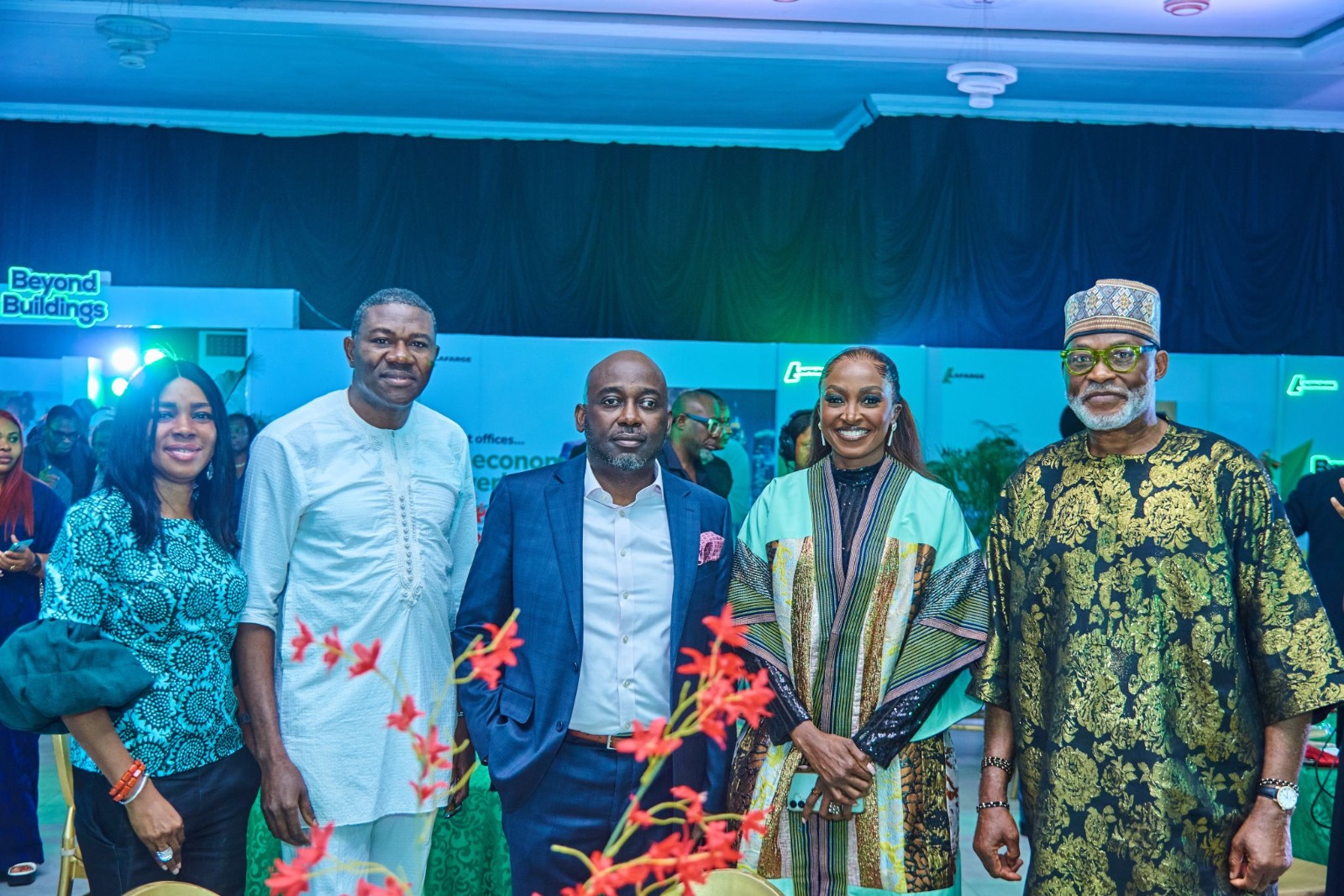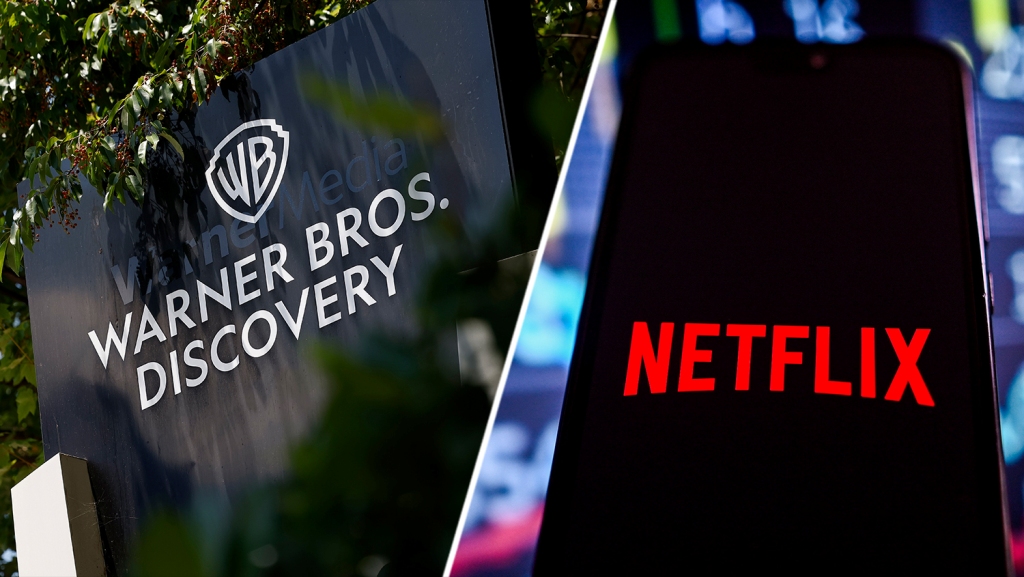Brands/Products
CNN to Showcase Dangote Transformational Projects

By Modupe Gbadeyanka
A new global branded content campaign to demonstrate the impact of Dangote Industries’ investment across Africa through its transformational projects will soon hit the airwaves.
The programme is packaged by the CNN International Commercial (CNNIC) and it tells the story of Dangote’s vision of a self-sufficient Africa, how the company’s investments are transforming the lives of communities and powering the economic growth of the region through agriculture, technology and infrastructure.
At the centre of this campaign is a film that highlights the impact of various landmark Dangote projects and initiatives including the world’s largest oil refinery that will fuel Nigeria with energy and employment, a fertiliser plant that is transforming crop farming, as well as investments in sustainability across production, training and research and essential improvements to infrastructure.
Filmed over a series of weeks in Nigeria, the campaign captures footage of each initiative, the people involved and uses statistics and graphics to show the effect that the projects have on communities, employment, future business and investment for the entire region and beyond.
Reaching a worldwide audience, the campaign will run as a two-minute film in commercial time on CNN US and international networks, with bespoke content produced for distribution across digital and social media platforms.
Data targeting and optimisation will ensure that the content reaches Dangote Industries’ key audiences of global c-suite executives and business leaders.
The cross-platform campaign is the latest part of a longstanding relationship between CNNIC and Dangote Industries which includes the sponsorship of Innovate Africa and the Profit Point segment of CNN Marketplace Africa.
James Hunt, Senior Vice President, Global Client Solutions, CNN International Commercial, said, “This new campaign captures the impact that Dangote’s Transformational Projects has on the community in Nigeria and the wider continent.
“By putting the impact on people and communities at the heart of our storytelling, we have been able to show the enormous and widespread impact of these impressive initiatives and projects. We are delighted to once again produce a cross-platform campaign with Dangote Industries as our partner and show our global audience how the company is transforming lives every day.”
Aliko Dangote, President/CEO Dangote Industries said, “We recognise the perceived difficulty of doing business across Africa, but we remain convinced that the potential for growth in Africa and the opportunities available in value-added manufacturing remain attractive.
“As a group, we create significant value in Nigeria and the African continent by generating multiple employment opportunities via our multi-billion dollars strategic investments in transformational projects such as efficient industrial and energy infrastructures, cement, road construction, rice production, sugar production, petroleum refining and fertilizer production.
“These investments are aimed at achieving food sufficiency and economic growth and empowerment across the continent with a positive impact on the people.”
Brands/Products
Lafarge Africa Debuts Beyond Buildings Campaign

By Adedapo Adesanya
Top building materials and solutions brand, Lafarge Africa Plc, has unveiled a new thematic campaign tagged Beyond Buildings geared towards highlighting its impact and contributions to Nigeria’s infrastructural development.
The campaign was unveiled by the chief executive of Lafarge Africa, Mr Lolu Alade-Akinyemi, on Monday, December 8, 2025, in Lagos.
Mr Alade-Akinyemi noted that the campaign highlights how Lafarge, through innovative and sustainable building solutions, has continued to shape the socio-economic development and progress of Nigerians and Nigeria by contributing to the construction of various structures, including iconic buildings and bridges, stadiums, hospitals, roads, and more, ultimately aiding the nation’s overall growth.
“For over six decades, beyond the manufacturing of building solutions, we have partnered in building the very foundation of Nigeria’s infrastructural development and its future. With our innovative solutions, we have made a significant contribution to our nation’s progress by providing essential building materials for numerous landmark projects.
“This also extends to the expansion of our production capacity nationwide, creating jobs and livelihoods, bringing development to communities, and introducing innovative products to meet the ever-evolving construction needs of Nigeria,” he said.
He described the campaign as a celebration of strength, innovation, history, shared success, and the power of progress, noting that it is the story of the company’s humble beginnings, which dates back to 1960 when its first factory began production.
“The Beyond Buildings campaign is the story of our vision, which is to be the leading building solutions company, driving innovation and operational excellence to create a greener planet and enable national progress. It shifts the narrative from our products to the profound impact we make on human lives. Our materials transform into national landmarks, powering jobs, livelihoods, and development across every state,” he noted.
The thematic campaign Beyond Buildings spotlights how Lafarge has been a strong and steady partner in building infrastructure that underpins Nigeria’s socio-economic progress.
“We are celebrating our enduring legacy and committing to a new era of sustainable and innovative growth. This campaign empowers us to tell that story with confidence and clarity,” he added.
Delivering his remarks, the Commercial Director of Lafarge Africa, Mr Gbenga Onimowo, stressed that the premiere viewing is an opportunity to share the compelling reasons why the company’s story, ‘Beyond Buildings,’ must be told.
Mr Onimowo stated that the campaign aims to reinforce the company’s position at the heart of Nigeria’s construction growth since independence, as demonstrated by its extensive footprint of infrastructure development across every corner of the country.
‘However, our contribution is not merely about building solutions including cement, mortar, plaster of paris and readymix concrete. It’s about the shared future and the national development we actively enable,’ he said.
He stated that the campaign was designed to move the conversation past the physical structures and shine a light on the socio-economic impact that the company helps create.
“Our campaign highlights the immense progress built on the concrete of trust since 1960. Our materials are integral to iconic landmarks like the National Theatre, 1st and 2nd Niger Bridges, Third Mainland bridge, Lekki-Ikoyi link bridge, the National Assembly Complex and countless national, commercial, academic and residential structures nationwide,” he added.
The event was well attended by distinguished stakeholders from the building and construction sector as well as the arts, culture, media and entertainment industry, alongside many of the company’s esteemed customers including veteran Nollywood actors Richard Mofe-Damijo (RMD) and Kate Henshaw.
Brands/Products
X3M Ideas Emerges Agency of the Year at LAIF 20th Anniversary

By Modupe Gbadeyanka
The prestigious Agency of the Year title has been clinched by X3M Ideas, a foremost integrated marketing communications (IMC) firm in Africa, at the Lagos Advertising and Ideas Festival (LAIF) Awards.
LAIF rolled out drums to celebrate its 20th anniversary at the Marriott Hotel, GRA Ikeja, Lagos, on Sunday, November 30, 2025.
The award ceremony, themed 20 Years of Crazy, was attended by several stakeholders in the IMC sector in the country.
At the event, X3M Ideas, established by a veteran in the industry, Mr Steve Babaeko, topped the medal table with 12 Gold, 20 Silver, and 24 Bronze awards, totalling 336 points. The second and third-placed agencies scored 153 and 141 points, respectively.
In 2023, X3M Ideas achieved a similar feat at LAIF and also emerged African Agency of the Year at the 2023 and 2024 editions of the African Cristal Awards.
During this period, Mr Babaeko was named African Personality of the Year, reaffirming the agency’s position as a leader in the African advertising industry.
The 2025 edition of LAIF was also a double celebration for X3M Ideas, as Mr Babaeko, alongside other industry leaders, received special recognitions and commemorative plaques for their invaluable contributions to establishing LAIF as West Africa’s premier creative showcase.
“We are extremely excited to win again at LAIF. This achievement demonstrates how we have continuously evolved, innovated, and remained creative, going ‘crazy’, in line with the theme of the award, by turning every brief into campaigns that resonate across all ages.
“This win also signifies that, together whether as individuals, agencies, or brands, we can shape the future of advertising, push boundaries, and redefine excellence,” Mr Babaeko, who is the Chief Creative Officer of X3M Ideas, said.
Recall, X3M Ideas broke a 70-year jinx to become the first Nigerian and West African agency to win at the Cannes Lions International Festival of Creativity.
The agency continues to put Nigeria on the global map, winning notable awards at the 2024 Lisbon International Advertising Festivals Group.
Additionally, X3M Ideas was recognised as one of Africa’s fastest-growing companies for 2025 by the Financial Times, ranked 31st among 130 companies across the continent.
Its campaign, Blood Sacrifice, also won at the 2025 Cannes Lions Festival, earning top honours at the prestigious ACT Responsible exhibition.
LAIF was established through the bold vision of the Association of Advertising Agencies of Nigeria (AAAN) to celebrate and elevate creativity within Nigeria’s marketing communications industry.
Brands/Products
Netflix to Buy Warner Bros. Discovery in $82.7bn Mega Deal

By Adedapo Adesanya
Netflix has reached a deal with Warner Bros. Discovery to buy the legendary TV and movie studio and assets like the HBO Max streaming service for $82.7 billion.
Warner Bros. Discovery is moving forward with its plans to split into two publicly traded halves in 2026. Once the split takes effect, Netflix intends to acquire the Warner Bros. half. The other half, Discovery Global, will house CNN and other cable channels. The Warner Bros. half includes its film and television studios, HBO Max and HBO.
The transaction values Warner Bros. Discovery at $27.75 per share, implying a total equity value of approximately $72.0 billion and an enterprise value of approximately $82.7 billion.
The deal is subject to regulatory conditions, of which there will be several, due to the size of the companies involved and what it means for competitiveness.
For several weeks, Paramount was thought to be the frontrunner in the auction for Warner Bros. Discovery. Paramount executives, who want to buy all of Warner Bros. Discovery – including its cable assets – were confident about their merger proposal and their mutually beneficial relationship with President Donald Trump.
However, Netflix surprised many with the boldness of its bids as it agreed to the same costly breakup fee that Paramount proposed, according to reports. This means the would-be buyer will pay Warner Bros. Discovery billions of dollars if the deal is not completed.
“Our mission has always been to entertain the world,” said Mr Ted Sarandos, co-CEO of Netflix. “By combining Warner Bros.’ incredible library of shows and movies—from timeless classics like Casablanca and Citizen Kane to modern favorites like Harry Potter and Friends—with our culture-defining titles like Stranger Things, KPop Demon Hunters and Squid Game, we’ll be able to do that even better. Together, we can give audiences more of what they love and help define the next century of storytelling.”
Mr Greg Peters, the other co-CEO of Netflix, said the acquisition would “improve our offering and accelerate our business for decades to come,” adding: “Warner Bros. has helped define entertainment for more than a century and continues to do so with phenomenal creative executives and production capabilities. With our global reach and proven business model, we can introduce a broader audience to the worlds they create—giving our members more options, attracting more fans to our best-in-class streaming service, strengthening the entire entertainment industry and creating more value for shareholders.”
“Today’s announcement combines two of the greatest storytelling companies in the world to bring to even more people the entertainment they love to watch the most,” said David Zaslav, President and CEO of Warner Bros. Discovery. “For more than a century, Warner Bros. has thrilled audiences, captured the world’s attention, and shaped our culture. By coming together with Netflix, we will ensure people everywhere will continue to enjoy the world’s most resonant stories for generations to come.”
The terms of the agreement will see each Warner Bros. Discovery shareholder receive $23.25 in cash and $4.50 in shares of Netflix common stock for Warner Bros. Discovery common stock share.
-

 Feature/OPED6 years ago
Feature/OPED6 years agoDavos was Different this year
-
Travel/Tourism9 years ago
Lagos Seals Western Lodge Hotel In Ikorodu
-

 Showbiz3 years ago
Showbiz3 years agoEstranged Lover Releases Videos of Empress Njamah Bathing
-

 Banking7 years ago
Banking7 years agoSort Codes of GTBank Branches in Nigeria
-

 Economy3 years ago
Economy3 years agoSubsidy Removal: CNG at N130 Per Litre Cheaper Than Petrol—IPMAN
-

 Banking3 years ago
Banking3 years agoFirst Bank Announces Planned Downtime
-

 Banking3 years ago
Banking3 years agoSort Codes of UBA Branches in Nigeria
-

 Sports3 years ago
Sports3 years agoHighest Paid Nigerian Footballer – How Much Do Nigerian Footballers Earn













